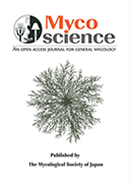Volume 57, Issue 1
Displaying 1-11 of 11 articles from this issue
- |<
- <
- 1
- >
- >|
Full paper
-
2016 Volume 57 Issue 1 Pages 1-10
Published: 2016
Released on J-STAGE: March 07, 2023
Download PDF (2726K)
Short communication
-
2016 Volume 57 Issue 1 Pages 11-19
Published: 2016
Released on J-STAGE: March 07, 2023
Download PDF (2567K) -
2016 Volume 57 Issue 1 Pages 20-25
Published: 2016
Released on J-STAGE: March 07, 2023
Download PDF (1695K)
Full paper
-
2016 Volume 57 Issue 1 Pages 26-34
Published: 2016
Released on J-STAGE: March 07, 2023
Download PDF (1782K) -
2016 Volume 57 Issue 1 Pages 35-41
Published: 2016
Released on J-STAGE: March 07, 2023
Download PDF (2234K) -
2016 Volume 57 Issue 1 Pages 42-50
Published: 2016
Released on J-STAGE: March 07, 2023
Download PDF (2084K) -
2016 Volume 57 Issue 1 Pages 51-57
Published: 2016
Released on J-STAGE: March 07, 2023
Download PDF (901K)
Short communication
-
2016 Volume 57 Issue 1 Pages 58-63
Published: 2016
Released on J-STAGE: March 07, 2023
Download PDF (2231K)
Full paper
-
2016 Volume 57 Issue 1 Pages 64-70
Published: 2016
Released on J-STAGE: March 07, 2023
Download PDF (545K) -
2016 Volume 57 Issue 1 Pages 71-78
Published: 2016
Released on J-STAGE: March 07, 2023
Download PDF (2415K)
Short communication
-
2016 Volume 57 Issue 1 Pages 79-84
Published: 2016
Released on J-STAGE: March 07, 2023
Download PDF (1020K)
- |<
- <
- 1
- >
- >|
